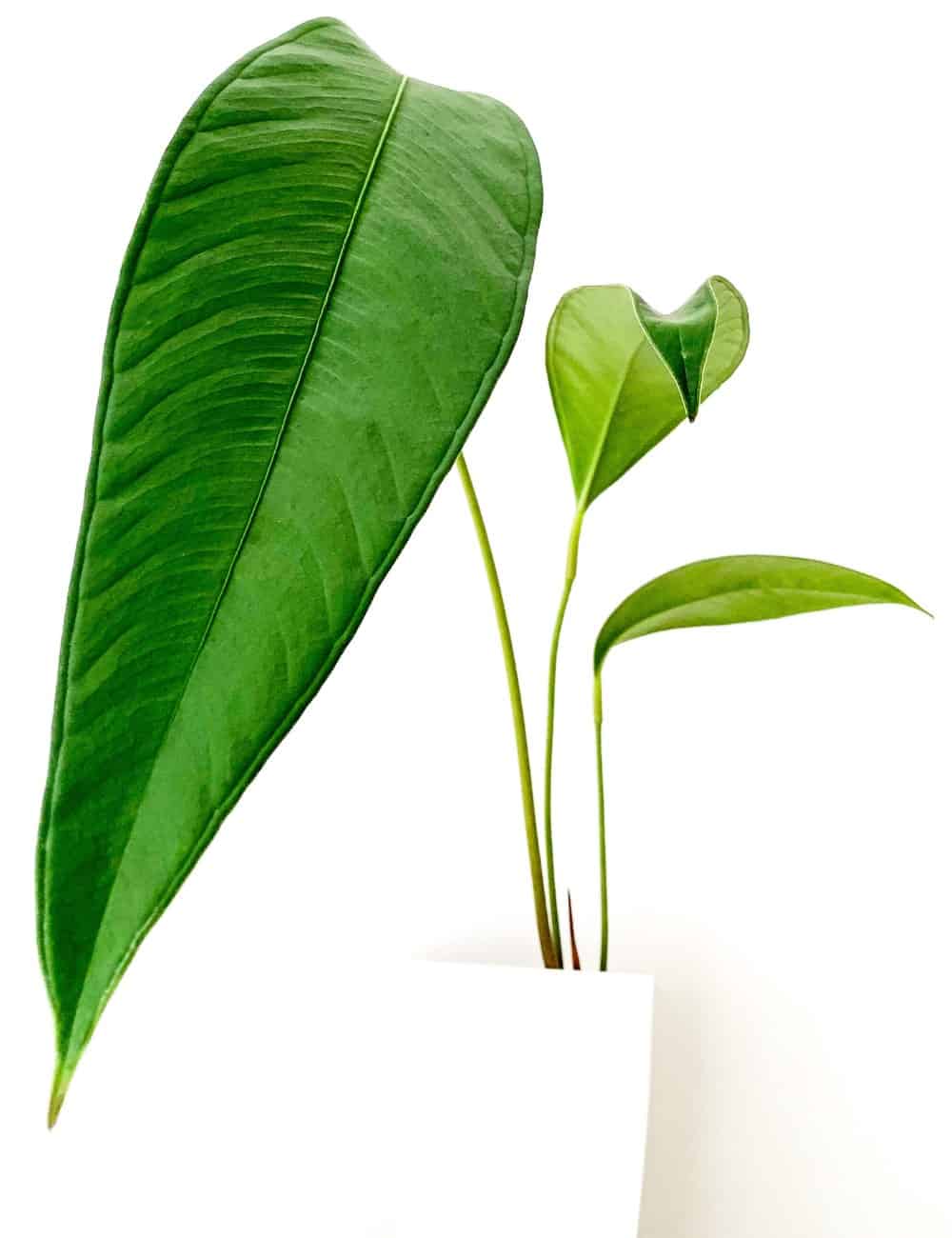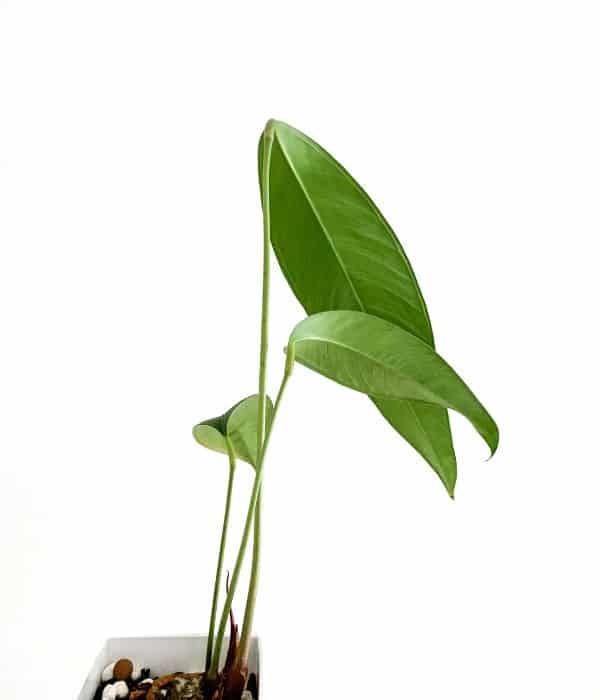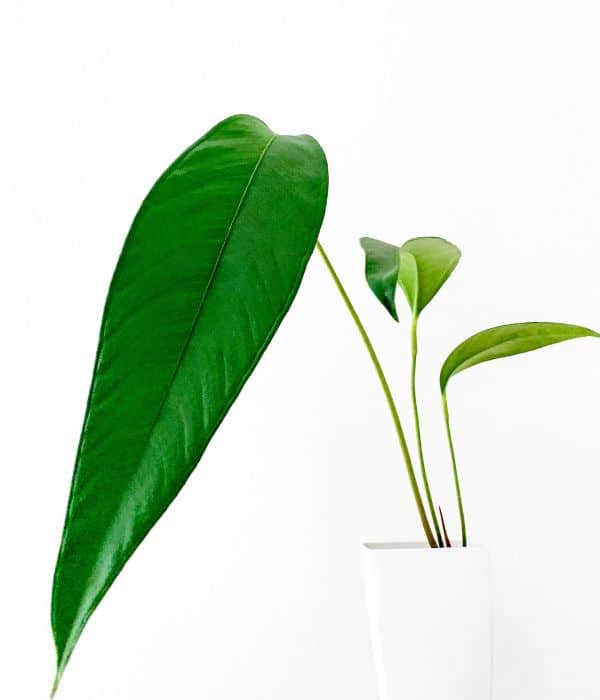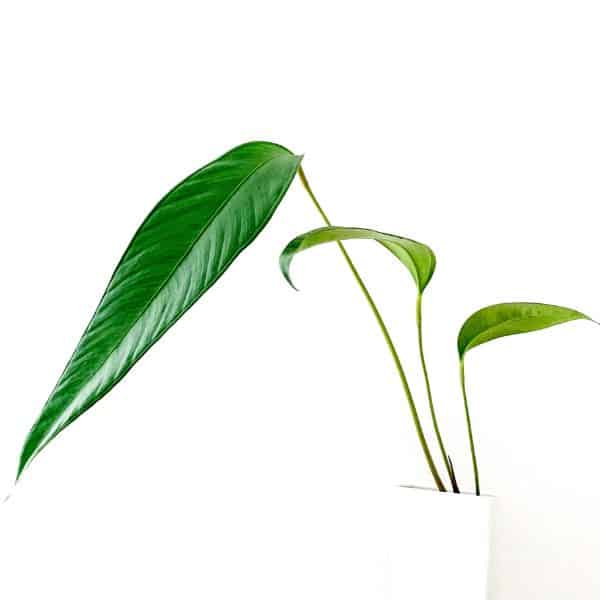Anthurium microphyllum is one of the most elegant anthuriums in my collection. The elongated, dark green leaves give off a stately presence. It’s a great addition to any aroid collection.
Here you’ll learn not only about Anthurium microphyllum but also its native habitat, which informs its care.

ABOUT ANTHURIUM MICROPHYLLUM
Anthurium microphyllum is a tropical plant belonging to the Anthurium genus in the Araceae family. It was first described by an English botanist William Jackson Hooker (1829), and later named by George Don, a Scottish botanist and plant collector.

THE LEAVES
Anthurium microphyllum leaves are dark green and slightly shiny with a blue hue. The leaves are rounded at the base but narrow towards the apex and have a thick midrib. The texture of the leaves feels like leather with lots of ridges.
It belongs to the Urospadix section. Other well known members of Urospadix section include Anthurium vittarifolium and Anthurium gladiifolium.
THE NATURAL HABITAT
Anthurium microphyllum is endemic to Brazil, with confirmed occurrences in only two states, Espirito Santo and Rio de Janeiro, in Southeast Brazil.
It grows primarily in the wet tropical biome of the Atlantic Rainforest and occurs mainly in coastal inselbergs.
Inselbergs are referred to rocky granite outcrops that emerge abruptly from their surrounding ecosystems, representing isolated terrestrial islands. These rocky outcrops are covered by vegetation adapted to extreme conditions of survival. Search for images in google of coastal inselbergs in Southeast Brazil to visualize how they look.
The inselbergs are common around the world, and the ones found in Brazil are some of the most diverse in vegetation and have the greatest expression of vegetation variability.
Inselbergs provide extreme environmental conditions such as low nutrient or water availability, high radiation levels, and large temperature amplitude. Only certain plant species with morphological and ecophysiological adaptations can tolerate such conditions.

Anthurium Microphyllum Care
Not much information is available about anthurium microphyllum care but knowing where it naturally occurs can give clues to its preferred growing conditions.
It is not the fastest grower in my limited experience growing it. Given that it’s found in coastal inselbergs, I’d guess it likes or is used to drying out in between the rainfalls.
If you’re importing it, expect it to take some time to take off after arrival and acclimatization. For more details on anthurium acclimatization, check out my blog on Anthurium warocqueanum care where I write about queen anthurium acclimatization.
It does fine in room humidity of 50-60%. I haven’t tested it in lower humidity environments, so I can’t vouch it will do well below that threshold. I keep the potting mix on the dryer side, but other than that, it receives the same care as most of my anthuriums.

You may also be interested in these blogs:
Rare Anthurium Species You’ll Want to Grow
The Unrivaled Guide to Anthurium Effusilobum Care
A Really Quite Good Guide to Black Anthuriums
Anthurium Lineolatum: A Stunning Aroid
Anthurium Bullatus, Pandurilaminum, or Bullatum? GET THE SCOOP

